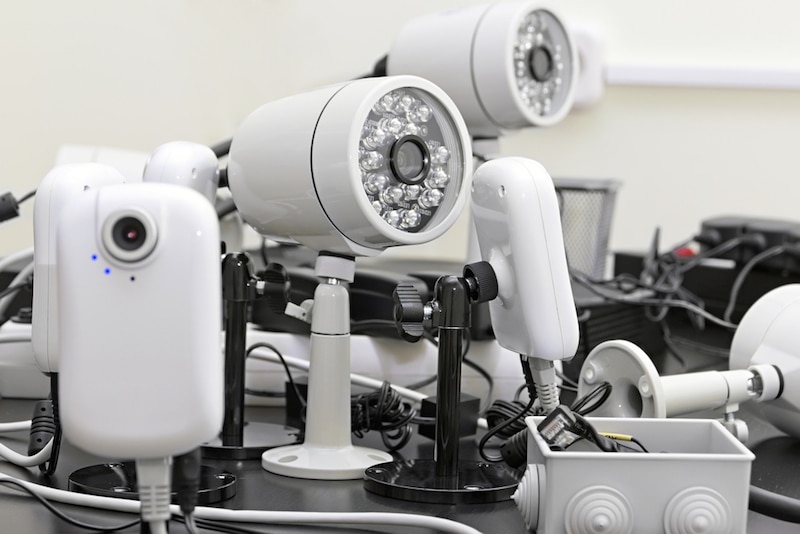IP Surveillance has the opportunity to play a leading part in the evolution of IoT in buildings. The supply chain will fundamentally change so what do manufacturers need to do if they want a piece of the action?
Video Surveillance plays a major role in protecting people and property in 3 main applications. These are Public Spaces, Transport and Buildings. How it relates and integrates to other services in these domains is now in the process of undergoing a fundamental change; which is to universally connect through the IoT in order to deliver a total integrated and automated managed solution.
This article has been abstracted from our published reports: The Physical Security Business 2014 to 2018 and The Internet of Things in Smart Buildings 2014 to 2020.

In buildings, Video Surveillance is just one of (around) 9 Building Automation Services (BAS) that will eventually be connected on a common IP communication platform, with all their data collected and analysed through Big Data software. In order that all aspects of the building performance can be fine tuned and automated without human intervention.
The investment in technology and people to achieve this task is nothing short of monumental. IBM alone has committed $3Bn over the next 4 years to develop analytical software and cloud services. They together with all their other iconic peers are confident that the IoT business is their future.
We forecast that by 2020 some $75bn will be spent on installing IoT in commercial buildings some 48% of the total cost of BIoT systems including all the BAS services. There is no doubt that BIoT systems will grow rapidly and the IoT content will increase and will pull through further demand for devices such as IP network cameras.
IP connectivity globally in video surveillance is running at approximately 40% (more in developed markets), which is around double that of any other of the 9 major services that make up BAS systems. It is installed in many different types of buildings and throughout buildings. It is considered to be one of the most valuable sensors for contributing data to automate the performance and safety of buildings. In addition IP network cameras have proven that the information they collect can interface with the business enterprise to deliver value add services; increasing the profitability of businesses.
The Supply Chain Will Need to Change
The present structure of the BAS supply chain is not appropriate to deliver the IoT content for the total BIoT solution and therefore it needs a fundamental change. We suggest that a more appropriate contractual arrangement would be to organise under 4 main contracts.
Contract 1 would be to design and install each of the 9 main BAS services. Little change here other than for most of the services, supervisory software would not be included. It is debatable as to whether the enablement hardware should be the responsibility of the BAS supplier or part of the Enablement Contract 2.
The Enablement Contract 2 selects the m/c controls that operate on the TCP/IP protocol and has them fitted at the factory that supplies the devices. This responsibility could be delivered under Contact 1 or to ensure that the whole system is plug and play from end to end it could be combined with Contract 3. This may depend on the type of BAS service and whether the project is for a new building or being retrofitted to an existing one.
Contract 3 is for the supply and installation of the wireless or wired network modules to be connected to the devices and also installing and/or picking up all the sensors on the wireless network that are not associated with the direct control or monitoring of the machines or devices.
[contact-form-7 id="3204" title="memoori-newsletter"]
Contract 4 will be to supply the software to analyse all the data and system applications and feedback instructions to automatically fine tune the controls for all the systems that are installed. This is the Big Data software contract which may be part of a managed service delivered through a cloud computing infrastructure.
New entrants from the IT Networking and the IT Software industries will, on new construct projects, want to deliver the last 3 contracts. They have the expertise, skills and finance to make BIoT work. However most of these companies have little experience of dealing with the construction and building services industry and therefore need partners to help them develop the market. Both manufacturers of products and installer integrators from each of the BAS services have the opportunity to take on this role.
It is particularly interesting to note that Video Surveillance has for the last 10 years attracted system integrators from the IT Networking industry and some of the larger companies now install integrated systems right across the physical security industry. In addition the major international conglomerates originally founded on building energy controls now supply the full spectrum of BAS services, having acquired software based companies and formed strategic alliances with major software companies.
The supply chain above will operate on new construction projects for Smart Buildings which will account for at least 70% of the value of BIoT projects. Retrofitting existing buildings will operate through a much more hybrid system over the next 5 to 10 years.
Consortiums including the providers of building services will join forces to better deliver BIoT solutions for existing buildings. Players currently operating and focusing on vertical buildings by type can identify the best opportunities for clients to convert to BIoT. Outside these consortia, we are already beginning to see the emergence of a number of cross sectorial partnerships between ICT firms with building controls firms and/or their systems integration partners.
This article has been abstracted from our published reports: The Physical Security Business 2014 to 2018 and The Internet of Things in Smart Buildings 2014 to 2020.



